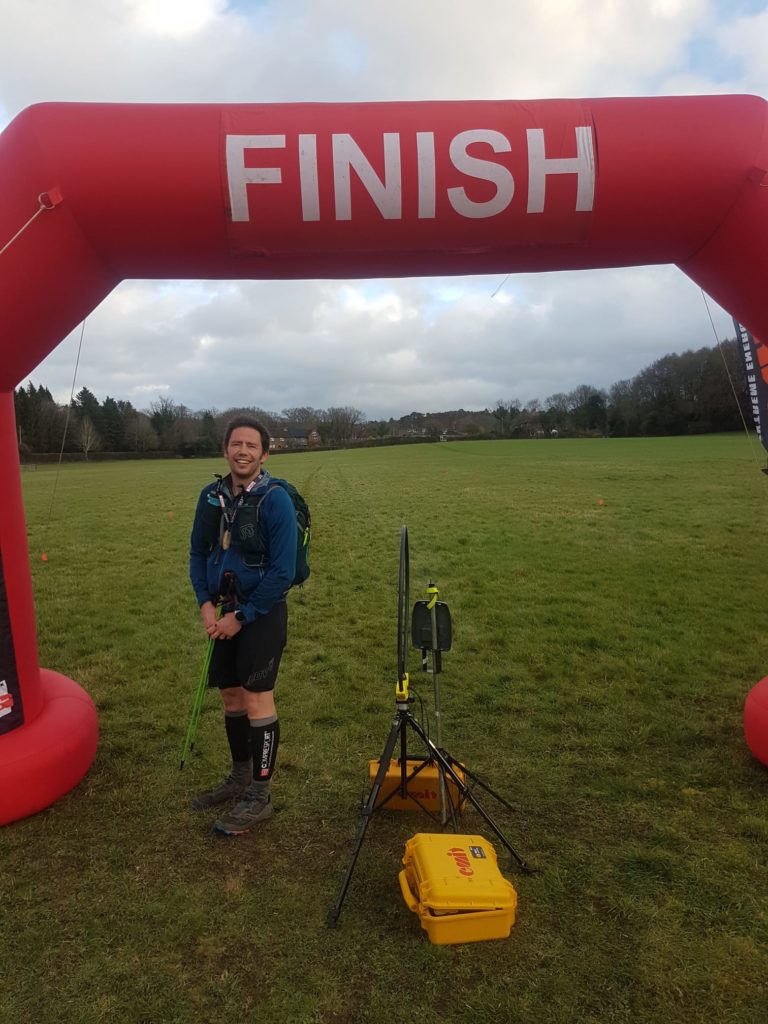Five years ago, I couldn’t walk. Now I’m taking on the toughest footrace in the world – the Marathon Des Sables – to support others living with axial SpA
Rafe Roylance, 37, had always been active, so when he first started experiencing back pain, he and his doctor put it down to wear and tear. But within eighteen months, when Rafe could not walk, he knew something was seriously wrong. Five long years later, having been diagnosed with axial SpA, Rafe is taking on one of the world’s most formidable endurance challenges to support others living with the condition.
I began experiencing back pain in 2015. I had recently left the Army and had started a new role, so initially, I thought the pain was down to starting a desk job. But after a couple of months, the pain had increased and was now accompanied by debilitating fatigue and extreme tiredness. Initially, my GP put my pain down to wear and tear, but he suggested I may have ruptured a disc in my back after a few more visits. I was advised to treat the pain with NSAIDs and was referred to a physiotherapist for treatment. But over the following year, the pain only increased, and my movement became more and more restricted.
Within 18 months, I couldn’t walk.
I knew something was terribly wrong. I had always been active, but now I was effectively disabled. Desperate for answers, I paid privately for an MRI scan and an appointment with a specialist. He spotted straight away that I had a condition called axial spondyloarthritis, a progressive form of inflammatory arthritis. I was referred to a rheumatologist to discuss treatment options.
I found myself in a really dark place.
I was so grateful to know what was causing my chronic pain, but I had no idea what a diagnosis of axial SpA would mean for me. I know now that it affects more people than MS and Parkinson’s combined, but at the time (like many people), I had never heard of the condition. I started medication to help manage my symptoms, but my rheumatologist warned me that the condition had caused so much damage to my spine that it was unlikely I’d ever run again. It was devasting, and I found myself in a really dark place.
Speaking with the NASS Helpline Team was the first time I felt any positivity about my diagnosis.
My wife stumbled upon NASS in 2018 while researching axial SpA online, and I got in touch with their helpline for advice. It was the first time I felt any positivity about my diagnosis. They were so reassuring, explained the importance of exercise in improving flexibility and my range of movement, and helped me access hydrotherapy treatment to help manage my symptoms.
Initially, it was hard to get moving again, even with the help of the medication. I began with yoga as it’s so gentle and slowly increased how much I did each day. After a while, I built up to walking, and I started to notice a correlation between the amount of exercise I did and a reduction in pain – the longer I was active, the longer I felt better after. I also started eating healthily and completely cut out alcohol, which made a difference.
 I went on my first run in January 2020.
I went on my first run in January 2020.
With my rheumatologist’s words echoing in my ears, I went out on my first run in January 2020, running four miles. I challenged myself to increase my distance until, a few months later, I could run 15 miles a week.
Although it’s a life-long condition, I know I am fortunate compared to many other people who live with axial SpA. I received my diagnosis relatively quickly compared to many other people who wait, on average, 8.5 years to receive a diagnosis. By that time, irreversible damage and fusing to the spine can occur.
I’m so grateful that I can manage my symptoms well with exercise. I’m also fortunate to have a wonderful family who stuck with me when I felt hopeless about my diagnosis and a supportive employer who made adaptations such as providing a standing desk, which has made an enormous difference.
I wanted to help others living with axial SpA and help raise awareness about this relatively unknown condition.
After being told I’d never run again, I’ve challenged myself to take on one of the longest and most difficult running challenges in the world – the Marathon des Sables. Taking place at the end of March, the Marathon des Sables is a 250km foot race across the Sahara Desert. The added twist – I have to be completely self-sufficient, carrying my backpack, food, and sleeping gear over the entire distance!
I’m raising money for NASS because they helped me understand my condition and gave me the support I needed to make the improvements I needed. They don’t just offer support. They also help raise awareness about axial SpA and campaign for early diagnosis and better services. I was also surprised to learn that they don’t receive any government funding, so every penny I raise will make a significant difference to them.
To find out more about Rafe’s challenge and for updates on his progress, please visit Rafe’s JustGiving Page.
If you have been inspired to take on your own fundraising challenge for NASS, please visit our events page for all upcoming activities.